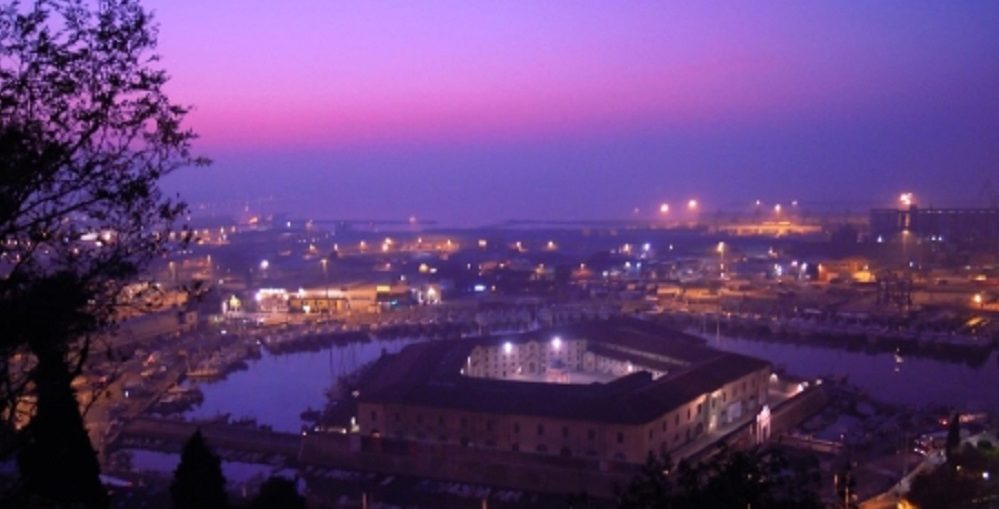
Nello specchio d’acqua del porto, unita alla terraferma da un ponticello, sorge la Mole Vanvitelliana dove si dice che anche il Casanova sostò, intento a fantasticare sulla possibilità di sedurre fantesche e vivandiere.
In una posizione strategica e suggestiva, nell’area portuale al di fuori delle vecchie mura della città antica, la Mole Vanvitelliana (vecchio Lazzaretto) è oggi sede di iniziative culturali e musicali.
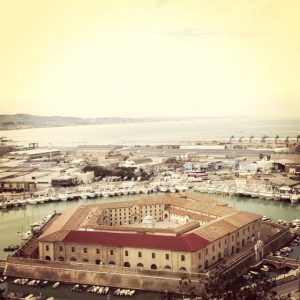 Progettata dal celebre architetto Luigi Vanvitelli (Napoli, 1700 – Caserta, 1773) a partire dal 1732 nell’area portuale del capoluogo marchigiano, durante il suo soggiorno nelle Marche in qualità di progettista pontificio.
Progettata dal celebre architetto Luigi Vanvitelli (Napoli, 1700 – Caserta, 1773) a partire dal 1732 nell’area portuale del capoluogo marchigiano, durante il suo soggiorno nelle Marche in qualità di progettista pontificio.
L’imponente costruzione (che si estende per quasi ventimila metri quadrati) fu progettata in funzione della riorganizzazione urbana di Ancona verso il mare in direzione sud e per garantire l’immunità da epidemie che avrebbero potuto portare merci e persone provenienti da luoghi riconosciuti come sospetti. La decisione di costruire un grande Lazzaretto fu giustificata anche dalla felice situazione commerciale attraversata dalla città di Ancona, divenuta in quel periodo porto franco grazie a Clemente XII.
La prima pietra viene posta il 26 luglio 1733; nel 1736 l’opera risulta in fase di avanzata realizzazione; i lavori saranno completati solo nel 1743, tre anni dopo la morte di Clemente XII.
L’edificio ha una forma pentagonale, situato nella zona del porto, è una sorta di isola autosufficiente, collegata all’esterno solo da una piccola passerella.
Il rifornimento idrico è assicurato da una rete sotterranea di cisterne di cui l’unica parte visibile è un piccolo tempietto neoclassico dedicato a San Rocco, presente al centro del cortile interno.
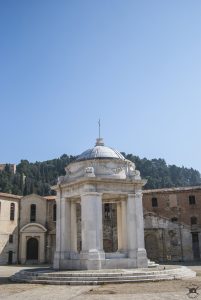
La funzione sanitaria originaria, per contumacie e quarantena era garantita, oltre che da tale efficiente sistema di carico e scarico delle acque, dalla dislocazione degli alloggi nella fabbrica interna; l’area del deposito merci era invece organizzata con un sistema ad alveare distribuito in ventisei locali.
Nel corso degli ultimi due secoli il Lazzaretto è stato utilizzato anche come ospedale militare e caserma. Nel 1860 cessa la sua funzione ispettivo sanitaria per diventare, nel 1884, sede di una raffineria di zucchero. Nel corso del XX secolo oltre al ruolo di base militare nei due conflitti mondiali, il Lazzaretto divenne anche sede, dal 1947, della manifattura tabacchi. Nel 1989 cominciano i lavori della Soprintendenza finalizzati al recupero dell’immagine originaria della struttura, attraverso restauri e demolizioni delle superfetazioni causate dai numerosi rimaneggiamenti e adattamenti necessari per le diverse destinazioni d’uso assunte dalla Mole.
Il Comune esegue infine altri lavori che mettono la Mole, dal 1993 in poi, in condizione di ospitare mostre temporanee, spettacoli teatrali, concerti e rassegne cinematografiche di rilievo.
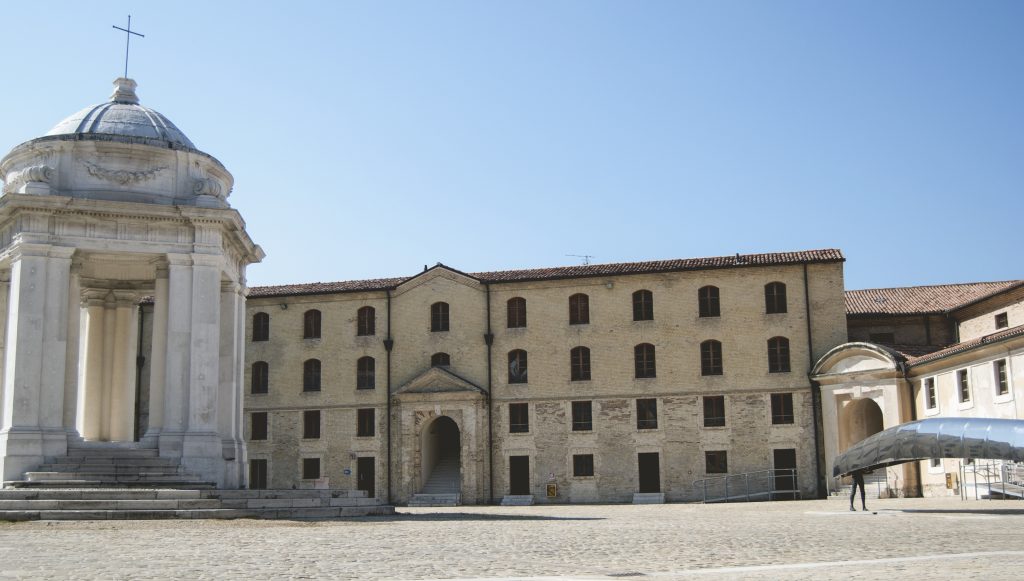
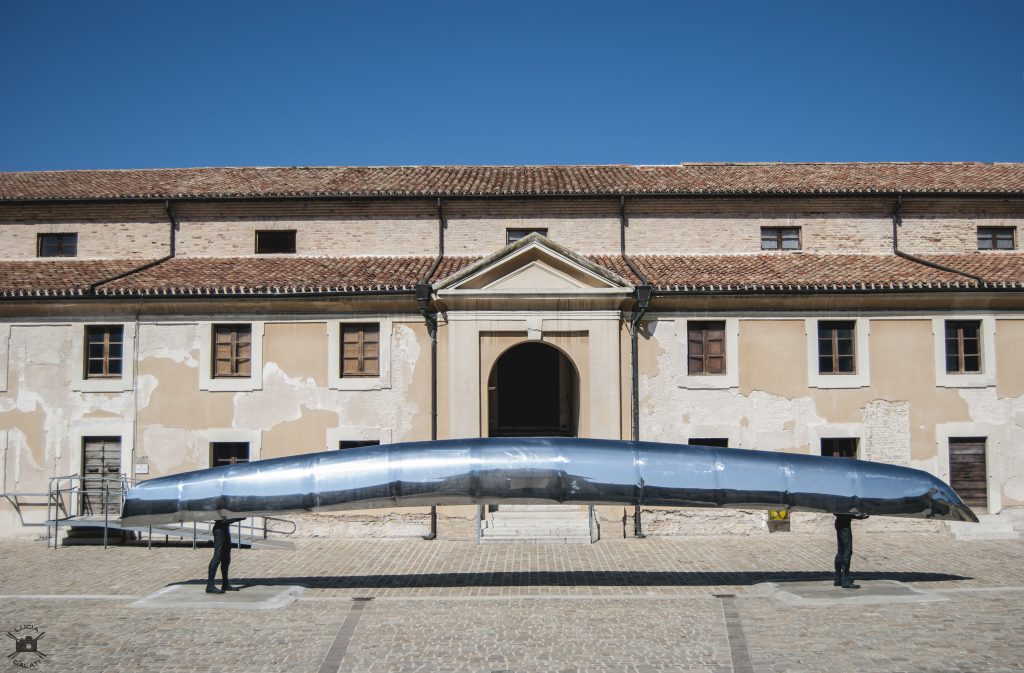
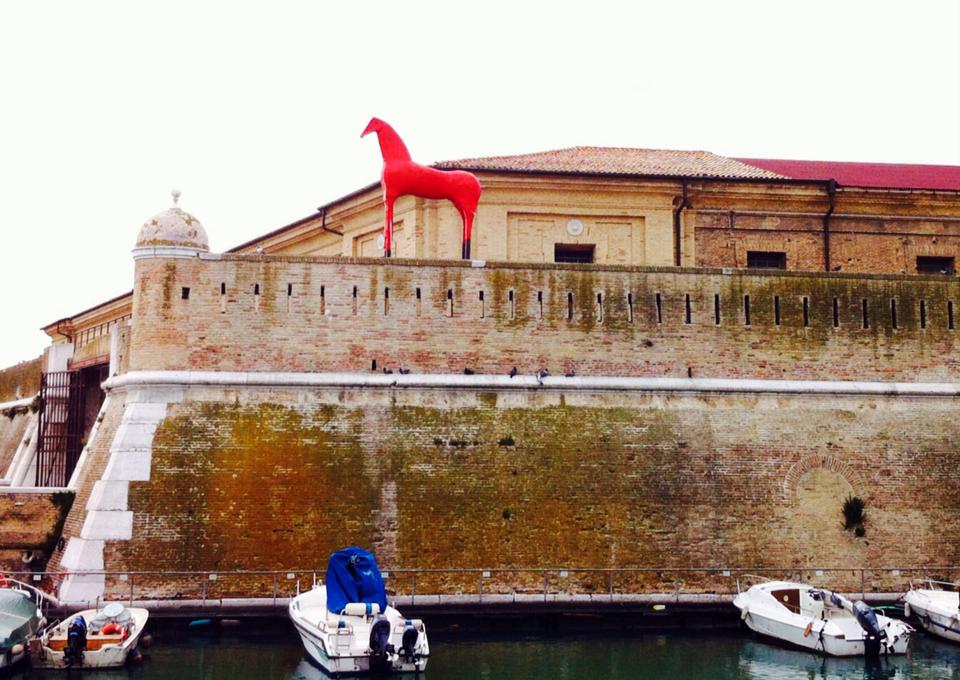
Mole Vanvitelliana – Banchina Da Chio, 29
FONDO MOLE VANVITELLIANA
Telefono: +39 071 9257388
INFORMAZIONI
info@lamoleancona.it
facebook.com/laMoleAncona
instagram.com/laMoleAncona
LAZZARETTO
In the waters of the harbour rises the Lazzaretto, also called MOLE VANVITELLIANA. The building is connected to the mainland only by a bridge. It is said that Casanova spent some time here, always on the lookout for maids to seduce.
Placed in a strategic but also charming position, in the harbour area just outside the old city walls, the Lazzaretto is now home to cultural and musical events. The building was designed by the famous architect Luigi Vanvitelli (Naples, 1700 – Caserta, 1773) starting in 1732 during his stay in the Marche as architect of the Pope.
The impressive building (with a surface of almost 20.000 square metres) was designed according to a complex plan of city expansion southwards, towards the sea. Besides, the new building was paramount to avoid epidemics that could have been carried by goods or people coming from unsafe places. The decision to build a large lazaret was also justified by the flourishing trade that Ancona was experiencing at the time, also thanks to the status of free port acknowledged by the pope Clement XII.
The first stone was laid on the 26 July 1733. In 1736 the building was already at an advanced stage.
the work was completed only in 1743, three years after the death of Clement XII.
The building has a pentagonal shape, and is a sort of artificial island in front of the harbour.
It is also self-sufficient, and connected to the mainland only by a small bridge. The water supply is ensured by a network of underground tanks, of which the only visible part is a small neoclassical temple dedicated to St Roch, in the centre of the inner courtyard.
The original sanitation function through quarantine was guaranteed not only by an efficient system of waterworks, but also by the positioning of accommodation units in the building. The storage area was organized in a beehive system of twenty-six rooms.
Over the last two centuries the Lazzaretto was also used as military hospital and barracks. In 1860, it ceased its function and, in 1884, it became a sugar factory. During the20th century, it was used as a military base during both world wars, then in 1947 it became a tobacco factory. In 1989 the Superintendence began to recover the original structure, through restoration and demolition, in order to delete the traces of the many adaptations that the Mole had suffered every time it changed its purpose. The City Council eventually performed further restorations. The Lazzaretto has been home to temporary exhibitions, theatre performances, concerts and major film festivals since 1993.
Mole Vanvitelliana – Banchina Da Chio, 29
Website: La Mole
Lazarett
Auf den Meeresgewässer, vor dem Hafen, befindet sich der Lazarett, auch “Mole Vanvitelliana” genannt. Es ist nur durch eine Brücke mit dem Festland verbunden, und darin hat Casanova selbst seine Quarantäne verbracht, immer mit der Absicht, Mägde zu verführen.
Das Lazarett liegt in einem strategischen, aber auch beeindruckenden Ort, d.h. im Hafengebiet außerhalb der alten Stadtmauer. Heute finden hier musikalische und kulturelle Veranstaltungen statt. Das Gebäude wurde von dem berühmten Architekt Luigi Vanvitelli (Neapel, 1700 – Caserta, 1773) 1732 erbaut, während seines Aufenthalts in der Region Marken als Architekt des Papstes.
Das imposante Gebäude (fast 20.000 Quadratmetern Oberfläche) war ein Teil eines komplexen Plan von Stadterweiterung südwärts, Richtung Meers. Zusätzlich war das neue Gebäude wesentlich, um Epidemien, die durch Waren oder Menschen übertragen wurden, zu vermeiden. Die Entscheidung ,eine große Lazzaretto zu bauen, kam auch vom blühenden Handel Anconas. Die Wirtschaft wurde tatsächlich vom Papst Clemens XII angekurbelt, da er die Stadt zum Freihafen gemacht hatte.
Der erste Stein wurde am 26. Juli 1733 gelegt; im Jahr 1736 war das Gebäude bereits in einer fortgeschrittenen Phase.
Die Arbeit wurde erst 1743 (drei Jahre nach dem Tod Clemens XII) fertiggestellt.
Das Gebäude hat eine fünfeckige Form, und ist eine künstlichen Insel vor dem Hafen.
Es ist auch unabhängig, und mit dem Festland nur durch eine kleine Brücke verbunden. Die Wasserversorgung wird durch ein Netz von unterirdischen Tanks gewährleistet. Der einzige sichtbare Teil von denen ist der kleine neoklassizistischen Tempel zu San Rocco gewidmet, in der Mitte des Innenhofes.
Die ursprüngliche Gesundheitsfunktion durch Quarantäne wurde nicht nur durch ein effizientes System von Wasserleitungen garantiert, sondern auch durch die Aufstellung der Wohneinheiten im Gebäude. Das Warenlager wurde stattdessen wie einem Bienenstock mit 26 Räume organisiert.
Im Laufe der letzten zwei Jahrhunderte wurde das Lazarett auch als Militärkrankenhaus und Kaserne verwendet. Es beendete 1860 seine Funktion und 1884 wurde es zu einer Zuckerfabrik. Im 20. Jahrhundert wurde es als Militärbasis während beiden Weltkriege verwendet , dann wurde es in eine Tabakfabrik im Jahr 1947 verwandelt. Die Oberintendatur begann die Rückbau, um die ursprünglichen Struktur durch Restaurierung und Abriss wieder aufzubauen. Die Spuren der vielen unterschiedliche Funktionen und Anpassungen wurden dazu entfernt. Endlich hat der Gemeinde eine zusätzliche Restaurierung durchgeführt. Seit 1993 richtet das Lazaretto, Ausstellungen, Vorstellungen, Konzerte und wichtige Filmfestivals aus. Mole Vanvitelliana –
Banchina Da Chio, 29
Website:La Mole
